|
|
|
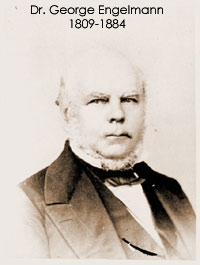 |
1834-1873 Long before the Federal Government started the federal program of taking and recording weather observations, a gentleman by the name of Dr. George Engelmann took temperature and precipitation observations at the observatory at 2nd and Chestnut Street in St. Louis. Some of his recorded observations were made part of the St. Louis weather records even though they are not considered "official". |
|
February 9, 1870 President Ulysses S. Grant signed a joint resolution of Congress authorizing the Secretary of War to establish a national weather service. The resolution required the Secretary of War... “to provide for taking meteorological observations at the military stations in the interior of the continent and at other points in the States and Territories... and for giving notice on the northern (Great) Lakes and on the seacoast by magnetic telegraph and marine signals, of the approach and force of storms.” |
|
|
October 12, 1870 Weather office officially established at 210 Olive Street in downtown St. Louis, under the jurisdiction of the Army Signal Corps. |
|
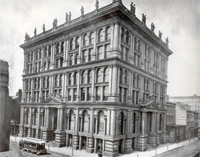 |
March 1873 The office moved to the corner of 6th Street and Locust in St. Louis, a move of 1300 feet. |
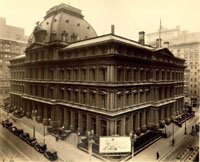 |
September 1883 The office moved to the Custom House, located at 8th Street and Olive. This building was also known as "The Old Post Office". |
|
1890 Congress passed the Organic Act, establishing the U.S. Weather Bureau as a civilian agency under the Department of Agriculture. |
|
|
May 27, 1896 A large and extremely destructive tornado struck the St. Louis metropolitan area causing widespread damage and the loss of over 400 lives. Read the account and see the accompanying pictures on NOAA's History Page. |
|
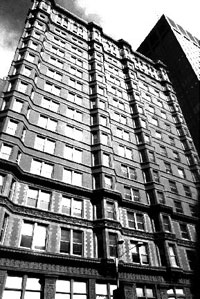 |
August 1903 Weather Bureau Office (WBO) moved 250 feet east into the Chemical Building, 8th and Olive Streets. |
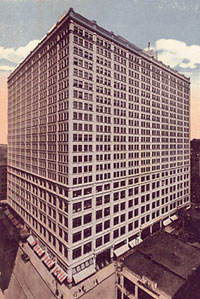 |
September 1913 The office was moved a mere 300 feet east into the former Railway Exchange Building. |
|
July 1929 With an upsurge of air travel and shipping, the Weather Bureau Airport Station (WBAS) was established for observations at Lambert Field, 15 miles northwest of the downtown office, which continued concurrent observations. |
|
 |
November 1935 The downtown Weather Bureau Office (WBO) was moved to the Courthouse on 12th and Market Street. |
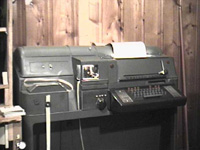 |
1939 The first teletype machines are installed, greatly improving communications. |
|
June 1940 The Weather Bureau transfers to the Department of Commerce. |
|
 |
1946 The Weather Bureau hired many women during the war years that served the offices as communicators and observers. This picture was taken on the roof of the Administration Building at Lambert Field. |
| A poster commerating the women that served the Weather Bureau during World War II. You can click on the small picture to view the full image. | |
|
June 1955 – July 1960 WSR-1 weather radar operational at airport office. |
|
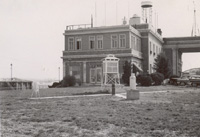 |
July 1958 The downtown Weather Bureau Office St. Louis closed and all activities consolidated with the airport office in the Administration Building at Lambert Field. Note the WSR-1 radar dome on the roof and the shelter and rain gage in the foreground. |
|
July 1960 WSR-57 radar operational at Lambert Field office. |
|
|
1970 The National Oceanic and Atmospheric Administration (NOAA) was established. The U.S. Weather Bureau was renamed National Weather Service (NWS) and became part of NOAA, under the Department of Commerce. |
|
|
January 1972 Weather Radio station KDO-89 was installed in St. Louis. Today WFO St. Louis operates 10 NOAA Weather Radio transmitters throughout the forecast area. |
|
 |
October 1974 Forecast office moved from Lambert International Airport to 4100 Mexico Road, St. Peters, MO, 15 miles NW of the airport. WSR-57 radar also relocated. All the other weather instruments remained at Lambert as the official observation site. |
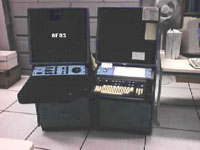 |
1980 Automation of Field Operations and Services (AFOS) installed with enhanced forecast, warning and communications capabilities. Teletype and weather facsimile machines phased out. |
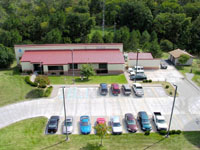 |
September 1990 Forecast and warning operations moved 8 miles SW into a new building in the Missouri Research Park in Weldon Spring. Some staff remained at the St. Peters office to take WSR-57 radar observations. The WSR-57 was decommissioned in 1994 and remaining staff relocated to the new office. |
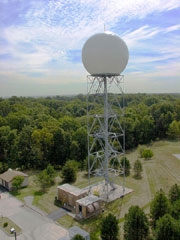 |
January 1992 Began use of the advanced WSR-88D Doppler radar – the 6th 88D installed in a new national network. The WSR-88D Radar in St. Louis was commissioned in July 1994. |
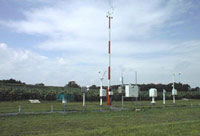 |
June 1996 Automated Surface Observing System (ASOS) commissioned at Lambert International Airport. Today WFO St. Louis maintains ASOS systems at seven airports in the forecast area. |
|
July 1999 NOAA Weather Radio Console Replacement System (CRS) was commissioned at the St. Louis Office. CRS allowed computer voice and automation capabilities. |
|
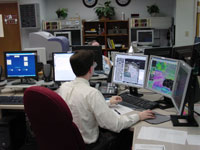 |
June 2000 New state-of-the-art forecasting system commissioned. The Advanced Weather Interactive Processing System (AWIPS) allows assimilation of radar, satellite, surface and upper air observations, and computer model guidance into one workstation. The older AFOS system decommissioned. |
|
More links to NOAA's past... |
|
|
|
|